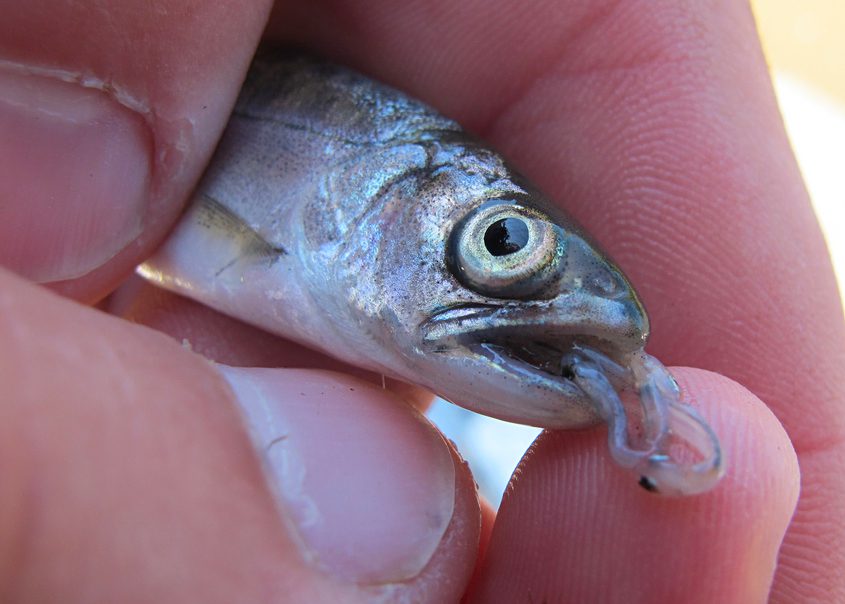Friday May 4, 2012

The diets of juvenile Chinook salmon rearing in freshwater tend to vary between river basins and over time since they are opportunistic feeders consuming a wide variety of terrestrial and aquatic insects. Early in their development, as fry and parr, their diet typically consists of small prey items such as zooplankton and insect larvae, but as they grow larger and develop into smolts their larger mouth gape makes them capable of consuming prey such as fish larvae and adult insects. As juvenile salmon continue to grow and enter the ocean they become even more voracious predators, feeding on pelagic planktivore fish like herring, anchovies and sardines. This little salmon has a long way to go before getting to the ocean, but with such a full belly it seems to be well prepared for the trip.
